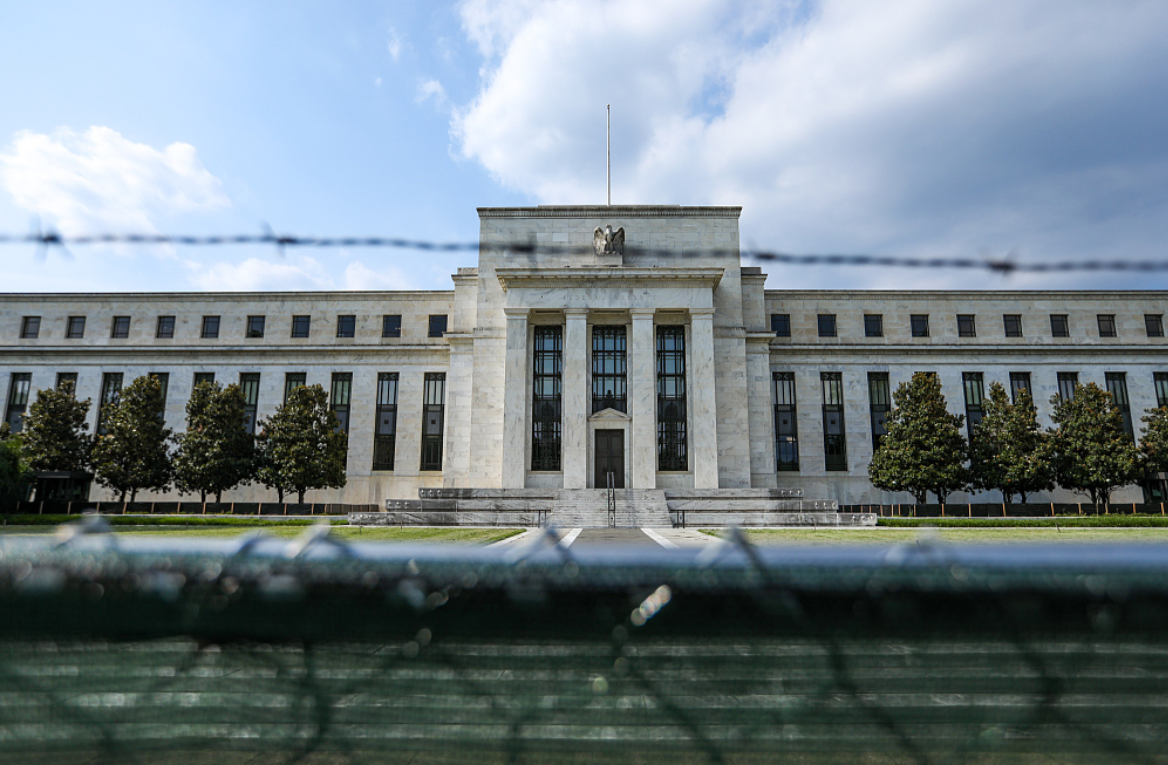U.S. Radimen Fiscal Policy or Drag the Latin American Economy
Author:CCTV News Client Time:2022.06.26
Since June, Brazil, Mexico, Argentina and other Latin American countries have raised their interest rates sharply to cope with continuously growing input inflation pressure. Experts believe that the impact of the Federal Reserve ’s interest rate hikes this year has sprayed to Latin American countries, and the multinational governments have adopted a tightening policy or will drag the Latin American economy.

△ On June 15, local time, the Federal Reserve Commission in Washington, USA.
On the 15th, the Fed announced that it had raised interest rates of 75 basis points, becoming the institution's maximum rate of interest rates since 1994, and it may raise interest rates by 50 or 75 basis points in the future.
On the same day, the Brazilian Central Bank announced that the benchmark interest rate was raised from 12.75%to 13.25%. This is the 11th continuous increase in interest rates since March 2021.
The Fed's interest rate hike is one of the reasons why the Brazilian central bank continues to tighten monetary policy. Paul Dutela, a professor of Economics at the School of Economics, St. Paul, San Paulo, Brazil, believes that if the Brazilian central bank does not continue to raise interest rates, the capital will flow to the United States. Level.

△ The Mexican central bank building in Mexico City, Mexico
The Central Bank of Mexico announced on the 23rd that the benchmark interest rate was increased by 75 basis points to 7.75%. This is the ninth consecutive interest rate hike since June 2021, and it is also the largest interest rate hike since 2008.
The Mak Central Bank said that the rise in agricultural products and energy prices caused by input inflation and geopolitical conflicts is the main factor affecting the country's inflation. It is expected that Mexican inflation will reach 7.5%at the end of this year, and it may raise interest rates again in the future.
The central banks of Peru, Chile, and Argentina also raised the benchmark interest rates 50 basis points, 75 basis points and 300 basis points in June to relieve inflation pressure.
Rodrigo Sainens, an economist at the University of Talca at Chile, said that a sharp interest rate hike in the Fed will lead to more investors bet in the US dollar and attract capital flow to the United States. The "hegemony status" of the US dollar has led to the passive followers of state central banks such as Latin America, and the fiscal policies with weak interest rates and stacked expansion will make the Latin American economy "slow down".

△ On June 22, local time, a supermarket in New York City, USA, made a low -cost advertisement on the sidewalk outside its store.
Analysts pointed out that emerging economies in Latin America are more sensitive to changes in US fiscal policy in the economic and trade fields. In interest rate adjustment, they will encounter "dilemma". ; But if you continue to increase interest rates, it will increase the cost of financing of individuals and corporate loans, which will have a negative impact on the regional economic recovery.
At the same time, the Federal Reserve ’s interest rate hike may drag the economic recession such as Mexico, which exports to the United States, and laid the hidden dangers of economic recession. The International Monetary Fund recently stated that the US economy is facing serious downward risks this year and next.
Mexican economist Mario Correa said that if the development of US economic development has slowed down, it will have a negative impact on other countries. If the US economy grows zero, the Mexican economy will decline by 1%to 2%.
American radical fiscal policies have caused analysts to worry about the "lost ten years" in the Latin America in the 1980s. At that time, the United States tightened the monetary policy in response to high inflation, which led to the default of Mexican debt with high external debt leverage, which eventually led to a debt crisis that swept the Latin American countries.
Herch Marchini, a professor of economics at the University of Buenos Aires, Argentina, emphasized that in the context of the new crown epidemic, many Latin American countries have been forced to advance their debt levels to maintain economic development, but the current complicated international situation and geopolitical situation Add uncertainty to the development of the region.
Marchini said that the overall growth rate of Latin America has a low growth rate, but it has not yet fallen into a decline. However, the country's national development is uneven, and the economic prospects of Latin America are not optimistic.
The United Nations Economic Commission of Latin America and the Caribbean has previously predicted that due to factors such as the new crown epidemic and geopolitical conflict, the economy in the region will only increase by 1.8%in 2022.
- END -
[Central Media watching Gansu] Gansu Tongwei: More than 100,000 acres of gold and silver flowers to be released is exactly when flower farmers are picked

Since June, more than 100,000 acres of gold and silver flowers in Dingxi City, Gan...
The "sweet taste" in a "rich fruit"
Xinhua News Agency, Haikou, June 16th: A sweet taste in a rich fruitXinhua News Agency reporters Zhou Huimin and Guo ChengDespite more than 17,000 kilometers apart, bird's nest fruits native to Ec...